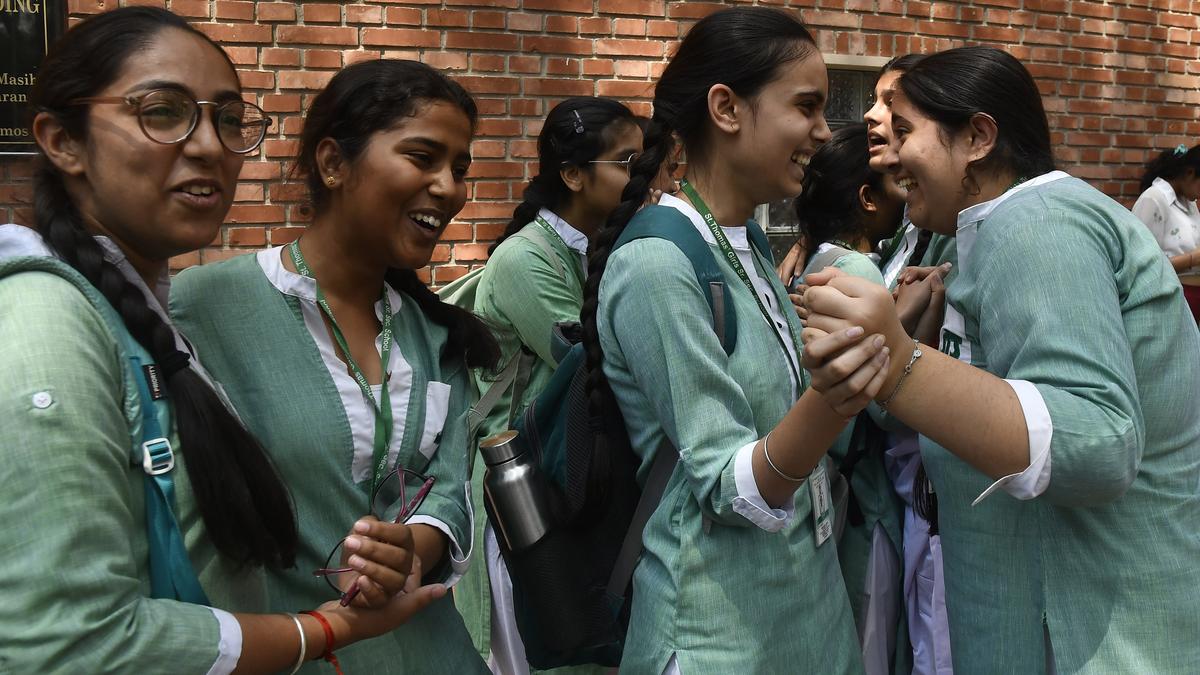At a job fair in Kochi, Kerala, in 2023
| Photo Credit: The Hindu/THULASI KAKKAT
The Union Budget has been presented, and this is the right time to outline the three kinds of jobs this writer believes India must create. Beyond reviving private consumption in urban areas, we must continue to strengthen long-term job creation and real wage growth across India.
The 2024 Budget had introduced Employment Linked Incentives (ELI) under the Prime Minister’s five-scheme initiative, designed to create over four crore jobs over five years with a central outlay of ₹2 lakh crore. The Prime Minister’s internship scheme saw significant traction in 2024, with 6.21 lakh applications for 1.27 lakh opportunities. The outcomes on the rest four — beyond a draft Cabinet note on ELI and meetings by DPIIT with the Ministry of Labour and CII, remain to be seen. But there must be more deliberation on the kind of jobs we wish to create for a Viksit Bharat.
Impact of climate change
First, climate-resilience. India was the seventh most-affected country by climate change in 2019, having suffered an income loss of $159 billion in 2021, and according to the Reserve Bank of India, will face adaptation costs of nearly $1 trillion by 2030. The impact on agricultural and labour productivity and also livelihoods requires exponentially higher levels of funding for building rural and urban adaptation capabilities and the rejuvenation of local ecosystems to boost job creation.
To meet the net-zero targets by 2070, the Government must create and incentivise jobs which are “climate-resilient” by maximising all “co-benefits” (IPCC). This could mean providing three to four state-subsidised e-rickshaws in about 6,00,000 villages to create about two million jobs (focused on women drivers), also improving last-mile mobility. Or, there can be new ways to enable private investment in compressed biogas plants to bridge the gap of 82 plants set-up versus the target of 5,000 set (for FY23-24) in 2018. Or, even accelerating achieving the 500GW non-fossil energy capacity target to create over one million jobs, with stronger support for decentralised and rooftop solar which can be seven times more labour-intensive (CEEW).
On AI resilience
Second, Artificial Intelligence (AI)-resilience. With the rise of generative AI, numerous jobs now have 50-plus% automation potential. Scenarios by McKinsey Global Institute show that 50% of automation adoption in India can happen in the next 10 years. India’s IT and business services, which comprised 70-plus% of services exports (Economic Survey 2021), hope to create millions of skilled talent exports. But their employment potential can be limited in the gen AI-era as labour gets costlier relative to capital. With the launch of metaGPT simulating software companies, AI writing 25% of Google’s code, and layoffs due to chatbots even in India, new jobs will also need to prioritise physical engagement and utilise our human ‘creativity’, which this writer terms as AI-resilience. This can take the form of larger education and health budgets to plug the deficit of millions of healthcare professionals and teachers across states or dedicated financing for the National Rural Livelihood Mission to facilitate global and urban market linkages of local products, crafts, and knowledge of farmers and artisans in rural India.
Being aspiration-centric
Third, being aspiration centric. Despite their growing engagement with the startup culture, rural youth continue to have low confidence due to deeper insecurities from poor foundational education (this includes English) and resource-deprived upbringing. This can reinforce dependency on government jobs and ‘coaching’ to ‘crack’ entrance exams. As their aspirations are shaped by their socio-economic backgrounds, digital media, and interaction of the ‘Samaaj, Sarkaar, and Bazaar’, the slow growth of non-farm jobs warrants off-farm job-creation which responds to these dynamic aspirations.
This can take the form of rapid infrastructure development such as building around 70,000 integrated pack-houses, plugging the 95-plus% infrastructure gap, to create over two million jobs. Or, boosting productivity and value-addition for high import/export-share items and tech-enabled local manufacturing of agri-inputs. Greater use of tech, social media, and rebranding the ‘rural’ can also help make off-farm jobs aspirational for India’s youth. One clear avenue is accelerating the ‘National Mission on Edible Oils – Oilseeds’ to reduce India’s 57% import-dependence of edible-oil back to the pre-WTO levels with the revitalised rural processing of native oilseeds like soybean, sunflower (about 40% of edible-oil imports), and boosting retail of in-vogue cold-pressed oils. Enabling creation of many such large-scale businesses with private-public partnerships and investments, can address economic aspirations of our disheartened youth protesting examination leaks and low recruitment vacancies.
While tax relief may temporarily boost urban consumer demand, amidst growing household indebtedness and suboptimal private investment trends, the Centre can demonstrate greater commitment for long-term structural reforms which create these climate-resilient, AI-resilient and aspiration-centric jobs. Many opportunities exist as we embark towards our shared vision of a Viksit Bharat.
Saubhagya Raizada is an independent policy researcher based in Delhi and has a Masters in Public Policy from the Blavatnik School of Government, University of Oxford
Published – February 04, 2025 12:08 am IST





